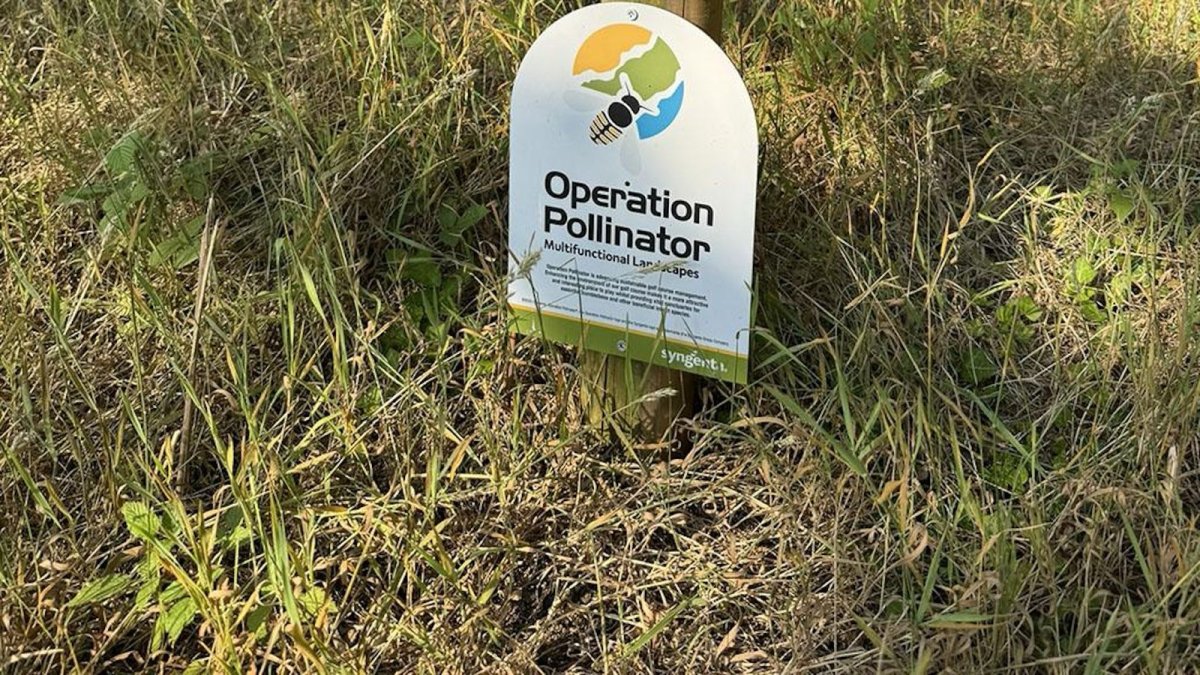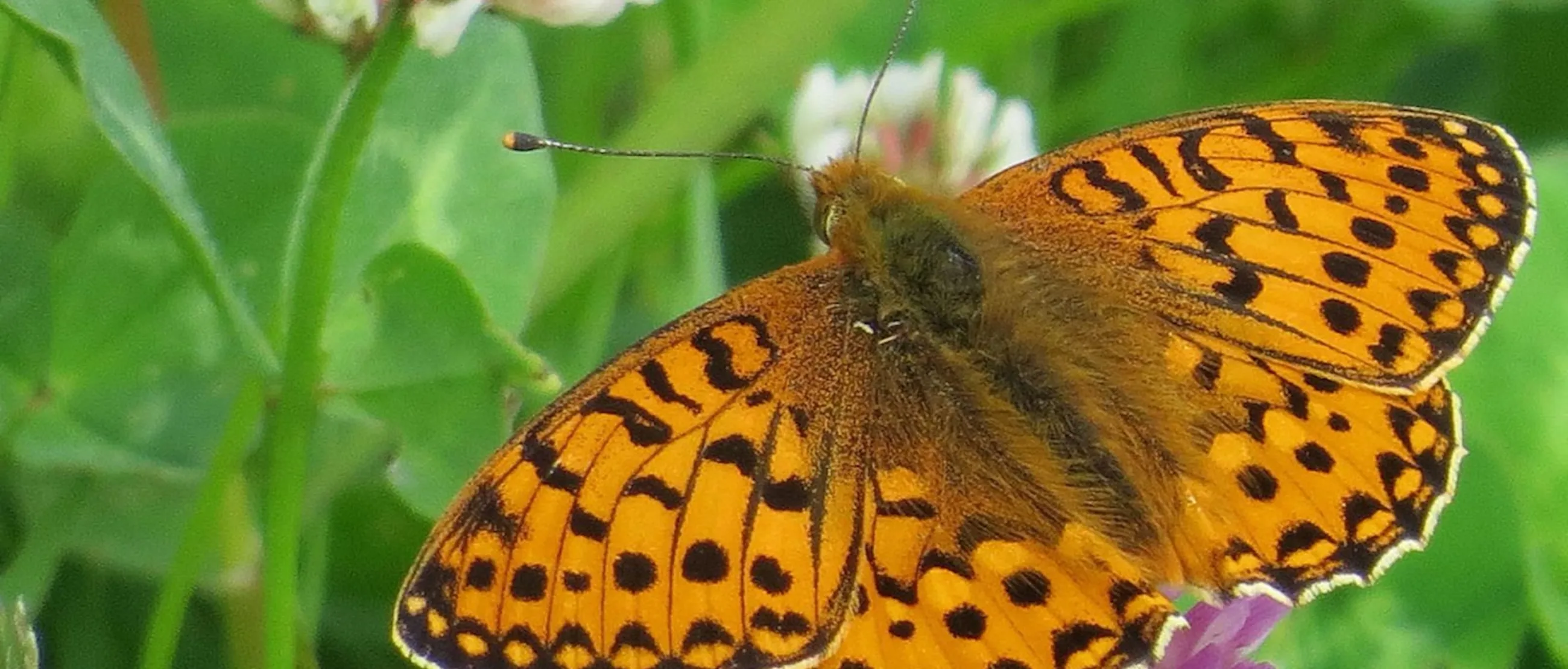Recent reports highlight a worrying trend: butterfly populations are in decline. Habitat loss, climate change, and agricultural intensification are pushing many species to the brink. But amid the challenges, golf courses have an opportunity to be part of the solution.
At Corhampton Golf Club in Hampshire, thanks to the efforts of Course Manager Lestyn Carpenter and an engaged community of members, the club has transformed its course into a haven for pollinators. So much so it has become a regional stronghold for the endangered Small Blue butterfly.
Why Butterflies Matter
Butterflies are vital pollinators and key indicators of environmental health. As their numbers decline, so does the overall biodiversity in the surrounding ecosystem.
But out-of-play areas of golf courses offer a unique opportunity to help. By setting aside small areas of habitat, planting native wildflowers, and adopting sustainable maintenance practices, golf clubs can actively contribute to reversing butterfly decline.
Corhampton's Success Story
At Corhampton Golf Club, a pioneering ecology group, formed by members and greenkeepers, has worked together to create and maintain essential pollinator habitats. The initiative has been so impactful that Corhampton was awarded the Syngenta Operation Pollinator Award accolade in 2023 for the second time as part of the Golf Environment Awards.
“We were told that if we put the habitat back then wildlife would find it,” recalls Lestyn Carpenter.
“What has been amazing is just how fast that has happened. And the immense diversity of species that has been recorded so quickly.”
The club’s chalk scrapes and natural wildflower areas have proven particularly effective. Once surrounded by vast agricultural fields with limited biodiversity, Corhampton now hosts a thriving population of the Small Blue, Britain’s smallest butterfly. Since the project began, butterfly numbers at the course have increased significantly, with the club’s ecology group conducting scientific surveys that feed into the UK Butterfly Monitoring Scheme.
A Model for Golf Clubs
Corhampton’s experience shows that restoring biodiversity doesn’t have to come at the expense of course quality or playability. With just five greenkeepers maintaining the course, the ecology group has played a crucial role in ensuring conservation efforts succeed without impacting core maintenance work.
Syngenta's Operation Pollinator, the initiative that has guided Corhampton’s efforts, is available to any golf club looking to enhance its ecological impact.

Across the UK, clubs are following Corhampton's example.
Goring and Streatley Golf Club in Berkshire were recently announced as winners of the Syngenta Operation Pollinator Award for 2025. Under the guidance of Deputy Course Manager, Melissa Winkworth, the club has restored 19 acres of lost downland meadows, providing vital habitat for pollinators, including the rare chalk hill blue butterfly. Their efforts have also included native hedgerow planting, log piles for invertebrates, and communication initiatives such as biodiversity ID guides for members.
Bamburgh Castle Golf Club, situated on the northeast coast, integrates pollinator conservation with natural links and heathland management. Working with Natural England, the club follows a cyclical rough management strategy and documents plant and insect species to inform members and the wider public.
At North Hants Golf Club, Deputy Course Manager Andy Reason has worked with conservation groups to expand native heather habitats and plant wildflowers. Their collaboration with local beekeepers ensures a balance between honeybee hives and wild pollinators, with honey sold in the clubhouse to engage members.
Dawlish Warren Golf Club, located within a national reserve, has prioritised environmental conservation by protecting rare plant species like the sand crocus. Partnering with Devon Wildlife Trust and University of Exeter, they conduct butterfly counts and maintain habitat diversity through rotational gorse and scrub management.
Recognizing the efforts of golf clubs across the country, Sarah Hughes, Syngenta Turf & Landscape Business Manager, said: “Together, the clubs involved with Operation Pollinator have created an enormous network of habitats for pollinating insects and wider biodiversity in well managed habitats, alongside managing turf for golf.
“Using Operation Pollinator to learn from each other’s experiences and share bast practices for both habitat management and communicating with clubs and players is a huge benefit, and a great way for the industry to demonstrate the value of golf as a positive ecological resource."

What Golf Clubs Can Do
If your golf club wants to help play its part and help reverse the decline in butterfly populations, here are some simple first steps:
- Identify suitable areas on your course for pollinator habitats—out-of-play roughs, woodland edges, or bunker surrounds are all great options.
- Plant native wildflowers that support butterflies, bees, and other pollinators.
- Engage members to help drive enthusiasm and provide additional resources.
Join Operation Pollinator, which provides expert advice and a network of over 250 clubs leading the way in ecological enhancement.
